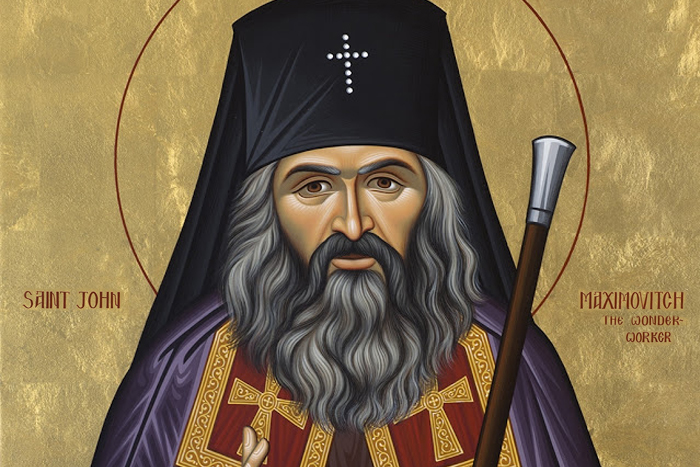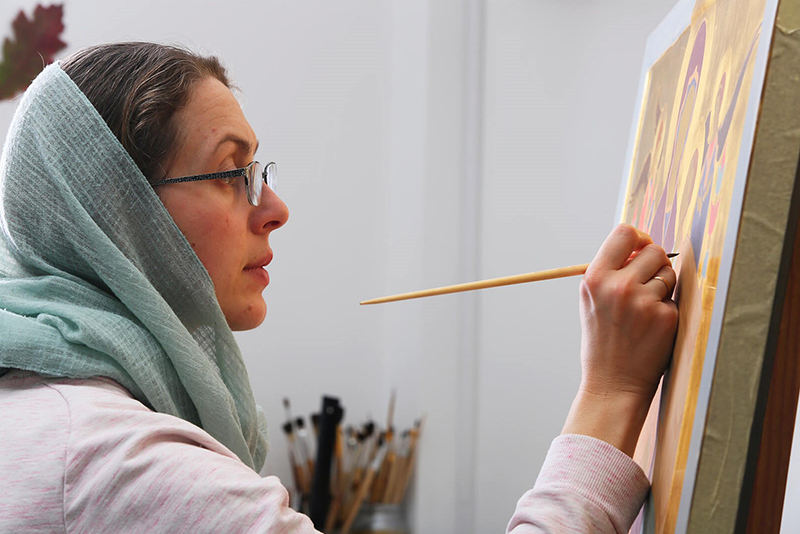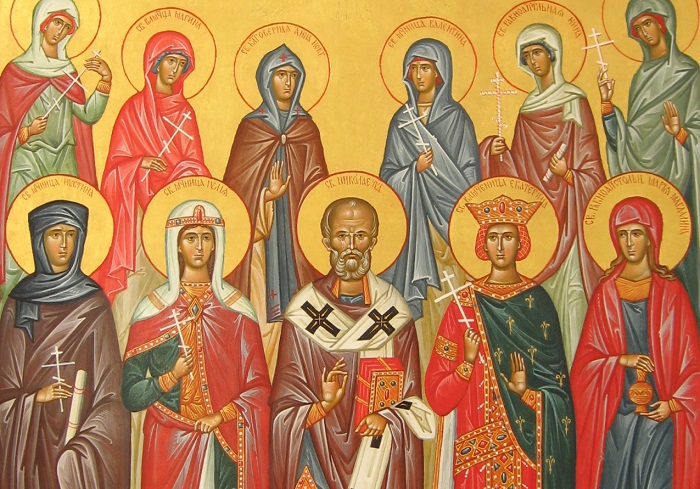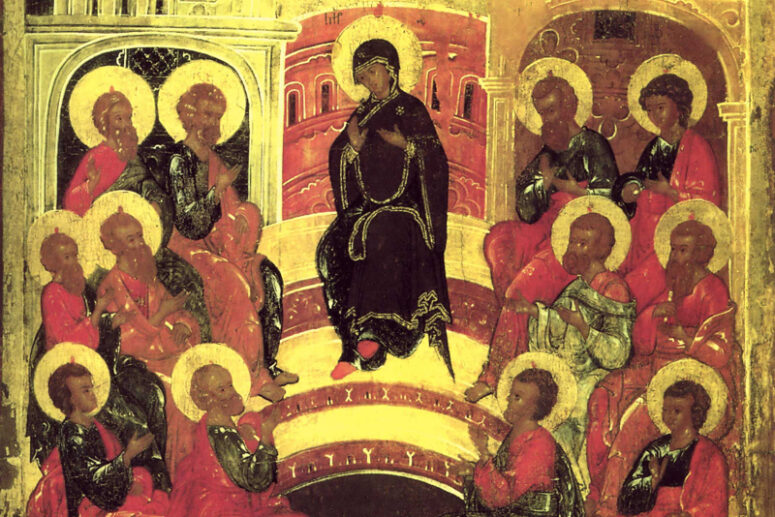
In Early Christianity, the Ascension of Christ and the Descent of the Holy Spirit were celebrated on the same day, ending the Easter weeks. The religious icons of that period have been lost, but some miniature images have survived in books and also on oil vessels. These images combine the two events, depicting Christ in Glory in the upper part, and showing the Theotokos below, surrounded by the apostles. The Holy Spirit is descending on them in the form of a dove.
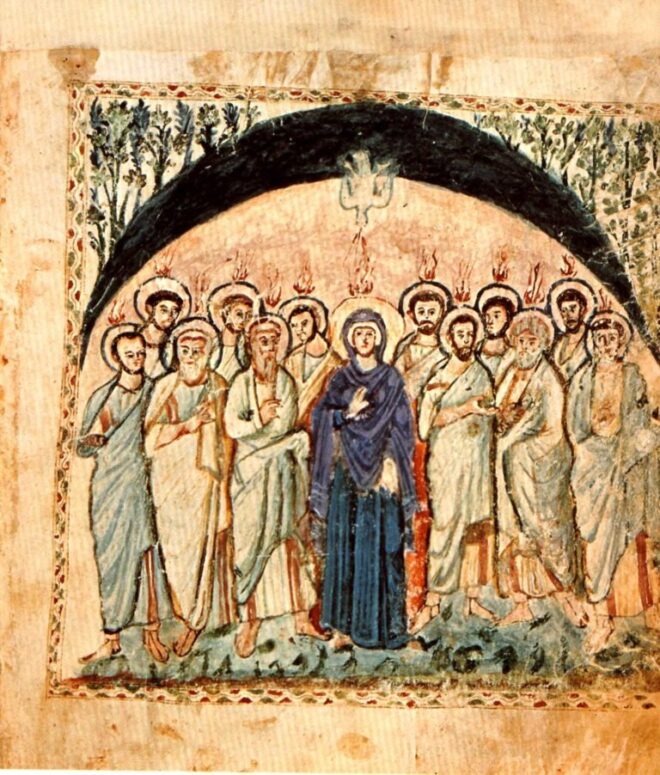
By the 6th century, the feasts of Ascension and Pentecost began to be celebrated separately. A miniature image from the Syrian Rabbula Gospels represents the Holy Spirit descending as a white dove on the Mother of God and the apostles, standing with flames of fire flickering over their heads. Essentially this image is an exact copy of the lower part of the ‘Ascension’.
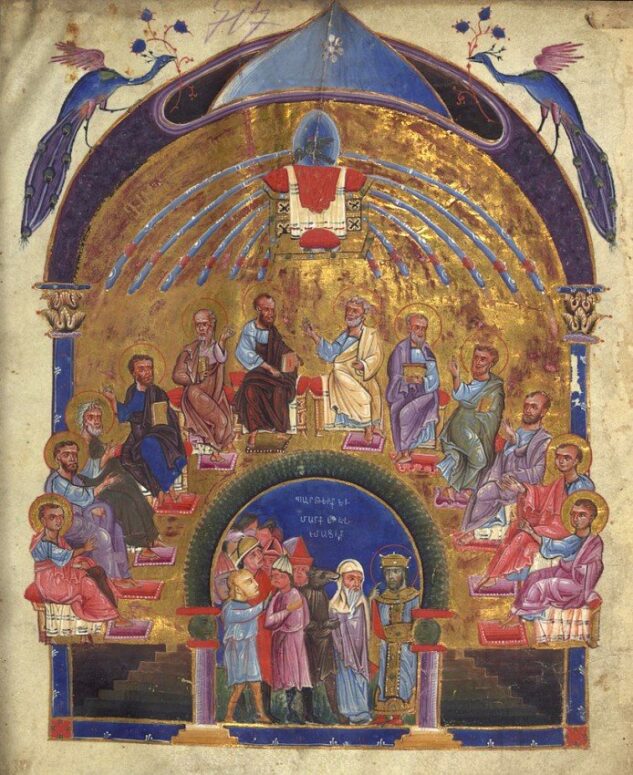
The Byzantine iconographers did not follow this trend, replacing it with a composition based on the image of Christ and the Disciples, with the twelve apostles sitting on benches in mount Zion’s upper room. The central place in the image is vacant, and the Mother of God is not depicted. The emphasis is placed on the idea of teaching and discipleship.
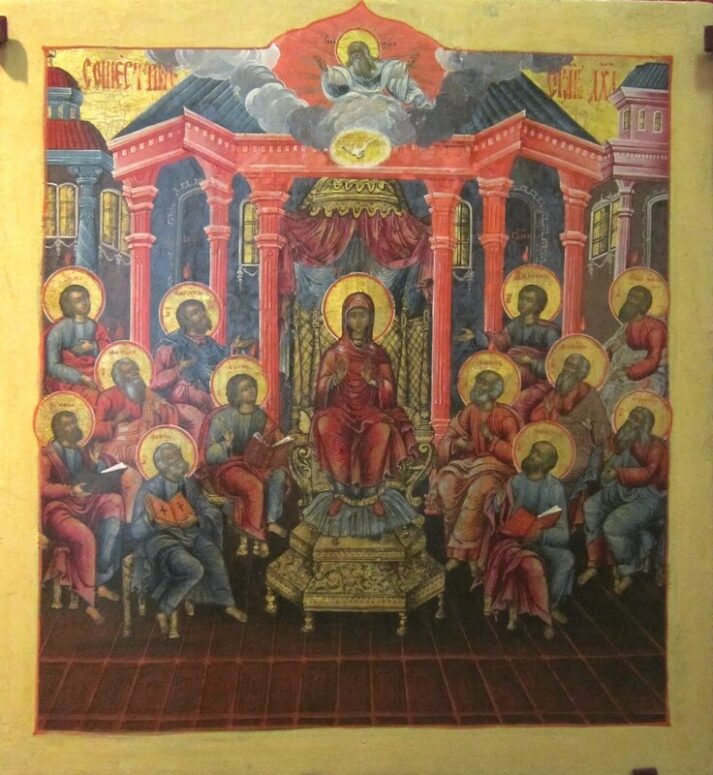
In Western art, one of the surviving iconographic types represents the Mother of God surrounded by the apostles. In the 17th century, the Russian icon painters adopted this version from the religious engravings that appeared in Russia at that time. It is historical and does not contradict Holy Tradition, since the Mother of God was with the apostles during the Descent of the Holy Spirit, and She also preached the Word of God. The Theotokos is usually depicted in the center, on a dais similar to a throne. Sometimes, when renovating icons of Pentecost, icon painters added Her image in the center, combining the two versions into one.
Russian craftsmen have created beautiful icons of Pentecost belonging to various types. Today iconographic devices and imagery are most commonly chosen based on the architecture and style of the interior decoration of a particular church.
Translated by The Catalogue of Good Deeds
Source: https://foma.ru/pochemu-na-odnih-ikonah-pjatidesjatnicy-izobrazhajut-bogorodicu-a-na-drugih-net.html


